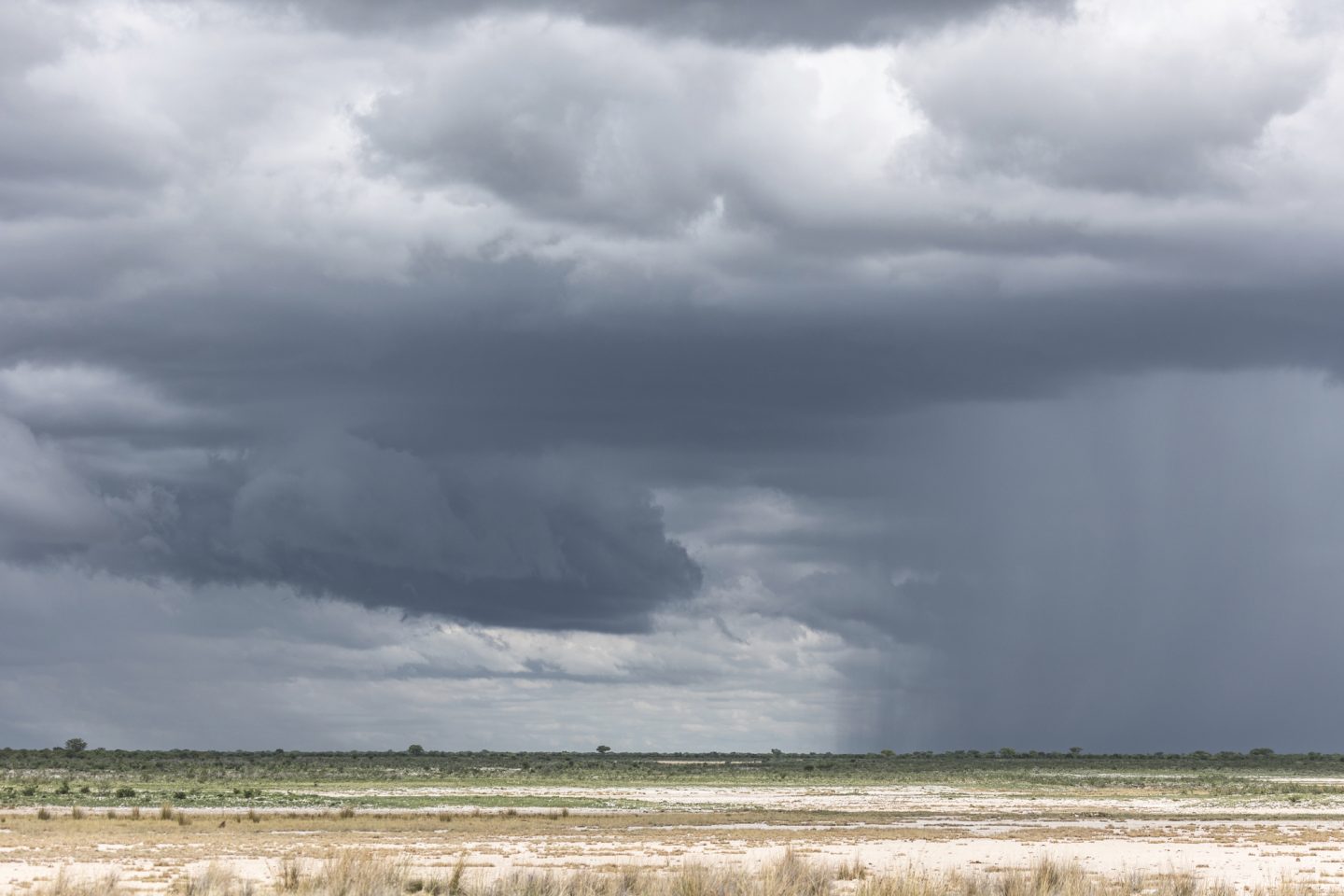

Have you ever smelt the rain?
Text Elzanne McCulloch
From the Autumn 2023 issue
Now I want to know, while the catchy Creedence Clearwater Revival song churns through your head after reading this heading, what is a wonderful memory from your childhood, or life, that you associate with a specific smell? Chocolate chip cookies your mom baked. Freshly cut grass at your school’s sports field. The scent of sea as the ocean waves tumble onto the coast on a misty morning.
For me, it is the smell of rain. Maybe it is because rain is something special and rare in our dry corner of the earth, but to Namibians there is nothing as sacred and celebrated as the moment when the first drop of much-anticipated perspiration hits a dry and dusty land. I can visualise that drop – the beauty of a darkened crater in the sand – and the smell that comes with it. Is it the smell of dust? Or is it fresh? A dichotomy for the senses.
Petrichor is a term used to describe this pleasant, earthy scent that is often associated with rain. For those (like me) that know nothing more about it than how wonderful it makes us feel, let me throw some newly learnt facts your way. The scent is produced by the interaction between the raindrops and certain compounds in the ground, and it has captivated people for centuries. The term “petrichor” was first coined by two Australian scientists, I.J. Goodchild and R.G. Thomas, in 1964. They discovered that the scent was produced by the release of a specific group of compounds known as geosmin and β-ionones.
Geosmin is a naturally occurring compound produced by actinobacteria, a group of soil-dwelling microorganisms. When it rains, water droplets penetrate the soil and release geosmin into the air. This release of geosmin produces the distinctive, earthy scent that is associated with petrichor. β-ionones are another group of compounds that contribute to the petrichor scent. These compounds are found in the roots of certain plants, and they are released into the air when the soil is disturbed, such as when it rains.
The petrichor scent is both fresh and invigorating, and there can be no doubt that it has a powerful effect on people. For many, like me, the scent evokes memories of childhood and running outside to play in the rain. For others, the scent of petrichor provides a sense of comfort and calm, helping to relieve stress and anxiety.
In addition to its psychological effects, petrichor also has scientific significance. Scientists have discovered that the petrichor scent can be used to study the microbial life in soil. By analysing the composition of the petrichor scent, researchers can learn about the types of microorganisms that are present in the soil, and how they interact with each other. This information can be used to develop new agricultural practices that are more sustainable and environmentally friendly.
Petrichor is also a key component of the hydrological cycle, which is the process by which water is circulated throughout the Earth’s atmosphere, oceans, and land. The hydrological cycle plays a critical role in regulating the Earth’s climate, and it is essential for supporting life on the planet.
So next time that sense of nostalgia and wonder hits your nostrils, take a moment to appreciate the petrichor and its role in the environment. Savour the beauty and complexity of the natural world. Whether you are a nature lover, a scientist, or simply someone who enjoys a good cloud burst, I hope you take some time to smell the rain.





